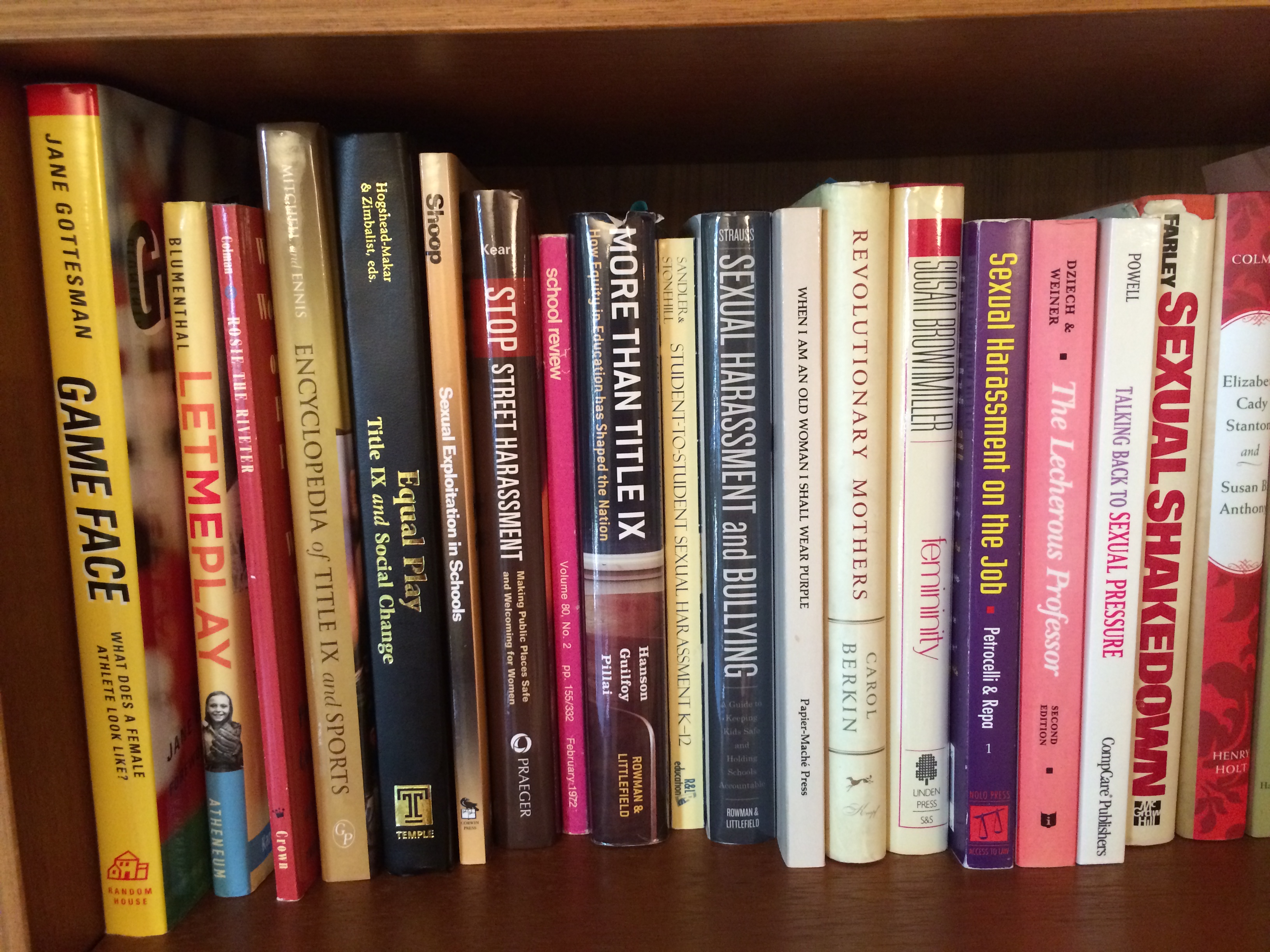Sports took center court under Title IX
(Video: Margot Polivy describes the struggles around women’s athletics under Title IX in the 1970s.)
The people who created Title IX really weren’t thinking about athletics. No one saw the uproar coming. For the most part, Title IX’s creators focused on collegiate admissions, equity in faculty hiring, fair pay, getting rid of sex-role stereotypes in school materials, and the like. But once the law passed in 1972 and the federal government set about formulating regulations to implement it, controversy over athletics quickly became the public face of Title IX.

Margot Polivy battled the NCAA on behalf of the Association for Intercollegiate Athletics for Women. (Photo by Sherry Boschert)
In many crucial settings over the next decade, Margot Polivy spoke for women’s athletics as the legal counsel for the Association for Intercollegiate Athletics for Women (AIAW). A serendipitous fluke put her there. (See the video.) Formerly an employee at the Federal Communications Commission, she joined Rep. Bella Abzug’s staff as an administrative assistant, where her duties included bailing her boss and other protesters out of jail following arrests for demonstrating against the Viet Nam War. “One night I had five Nobel Prize winners in at once,” she said.
Polivy then joined a private legal practice in communications law, where the AIAW found her. She became such an expert on both the AIAW’s governance of women’s athletics and the men’s version — mainly the National Collegiate Athletic Association (NCAA) — that she helped educate and influence the Office for Civil Rights staffers as they created the Title IX guidelines. When the NCAA eventually sued the Department of Health, Education and Welfare on the legality of Title IX, Polivy and AIAW intervened to support the government’s side.
Polivy represented women’s collegiate sports in the last decade of a significant dichotomy between female and male models of athletics. The AIAW and its predecessors placed a premium on the physical education aspects of athletics and centered them around student-athletes. They barred scholarships and recruiting to stay centered on amateurs who could pursue athletics for their individual growth and satisfaction — not just the more talented athletes, but everyone. The AIAW tried mightily to avoid the male model of college athletics, which had been tainted for many decades with stories of bribes, cheating, and academic slackers all in the name of winning. For more details on how the female and male models of athletics collided, see Welch Suggs’ book A Place on the Team: The Triumph and Tragedy of Title IX (Princeton University Press, 2005).
When Title IX passed, however, female athletes began suing to get the same resources as the men, including athletic scholarships, and the AIAW had to adjust. Still, AIAW and Polivy tried to make the most of Title IX. Working with other feminists in the National Coalition for Women and Girls in Education and elsewhere, they successfully fought off dozens of legislative attempts to weaken Title IX.
It was a heady time with lots of progressive changes happening. Congress passed the Equal Rights Amendment and sent it out to the states for ratification. The National Women’s Political Caucus formed. Rep. Shirley Chisholm became the first African-American woman to run for President. Title IX began to open up education and athletics to women. And more.
Polivy called it a “golden age” because “the people who opposed all those things really hadn’t gotten their acts together. In some cases, like the NCAA, they didn’t even know it was happening” until significant changes were in place, she said in an interview.
Within a decade, those forces got their acts together in a big way. By the early 1980s, the courts had restricted Title IX’s reach, the AIAW was dead, many female coaches had lost their jobs as colleges consolidated men’s and women’s athletics, and the NCAA took control of both men’s and women’s sports after it failed to kill Title IX. The historical pendulum since has swung back with corrections to resurrect Title IX, but it took the efforts of thousands of activists, attorneys, and politicians to get it strong again. And without vigilance, the pendulum could swing back toward weakening Title IX, Polivy says.
Athletics, too, is dynamic. Men’s athletics is “being stripped of the illusion of being a collegiate program,” and that’s a good thing, she said. “However you slice it, [student athletes] are being exploited. You have a talented kid and you give him, allegedly, a scholarship. He blows his knee out, and he’s destroyed a whole profitable career in the pros. No insurance. And there’s absolutely no reason in the world why we aren’t insuring kids that are participating in these things. That’s starting to come about.”





